| Japanese | English |
It was measured using two personal computers. SONY VAIO PCG-505 R/DK was used for reproduction and Dell Inspiron7500 was used for measurement. Measurement software is DSSF3.
The water of a toilet is poured 2 seconds after the measurement starts.
The valve closes at 10 seconds. There is a quite loud sound. After that, the
sound of which water is supplied continues till the measurement ends.
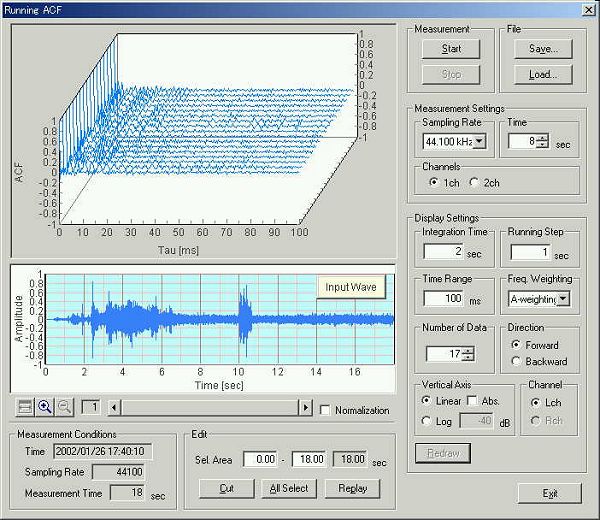
Time change of Φ(0) (sound pressure level) in SA. Click the Play button
in this window to reproduce a recorded sound. Sound is recorded using the
microphone MS907 of SONY, and it is measured by EA (Environmental noise
Analyzer) automatically.
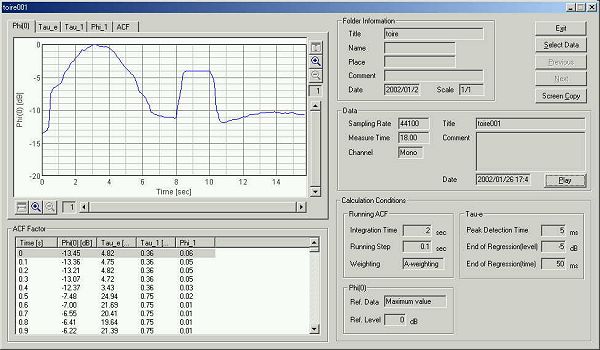
This is the main window of EA.
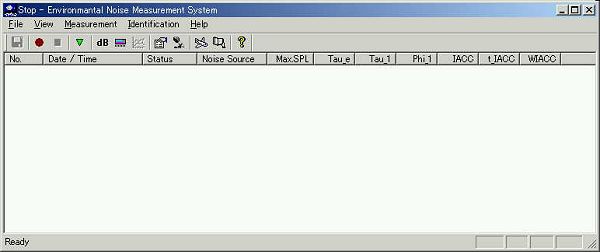
It is the setting screen of the input device. This screen is displayed when
you click the mark of the microphone in the tool bar, or choose the "Input
device settings" from the pull down menu. Here, the microphone MS907
is chosen.
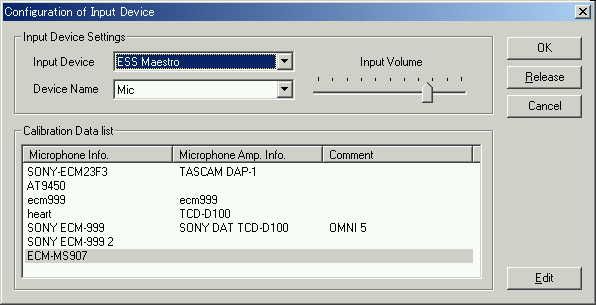
Click the Edit button to confirm the calibration. The input level should be
adjusted for the sound level meter reading.
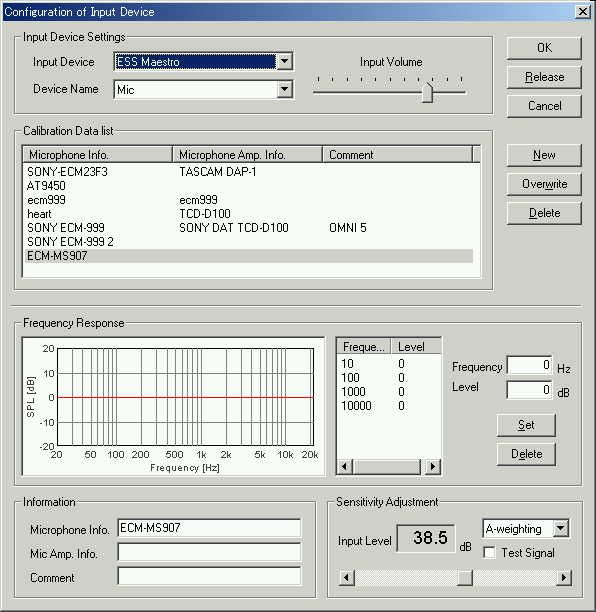
This is the setting window of the measurement conditions. Sampling rate
should be set as 48 kHz. Trigger SPL (20 dB in this example) is set as the
relative level. It means that the measurement starts when the SPL exceeds
20 dB from the beginning (SPL for first 2 seconds is set as 0 dB). Time constant
is a duration in which the SPL is averaged. Measurement timing is a setting
to specify the start timing of the measurement. It can be chosen between the
Maximum level and the Trigger SPL.
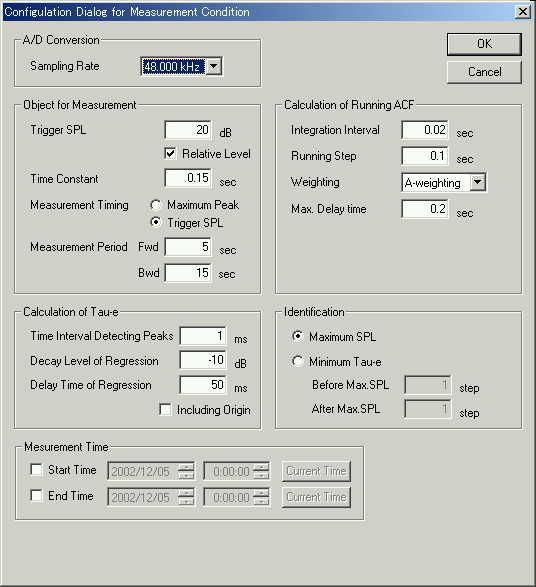
Detailed explanation of a setup of the Running ACF is omitted here. See the program manual. Integration interval is set as 0.02 sec. This is for capturing the change of the sound pressure level precisely. Identification timing was set as Maximum SPL tentatively.
This is the peak level monitor. The signal level is displayed relative to the
peak level of the built in sound circuit.

This is the SPL meter. Sound pressure level is displayed in dB. Trigger SPL
is monitored by this value. The microphone must be calibrated by using the sound
level meter or the acoustic calibrator.

How to make a noise source template.
Here, the previous (Analysis of Toilet Flushing Noise 1) analysis result is explained again.
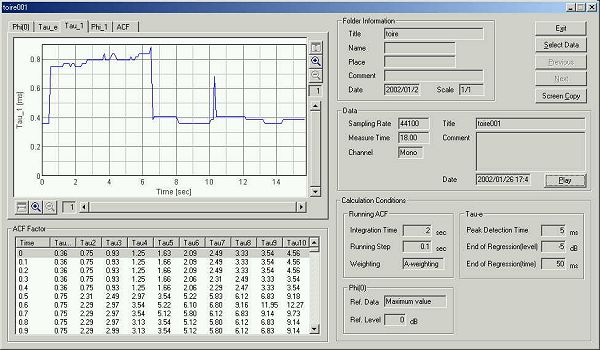
The t1 is the time delay of the first peak of the ACF that is the reciprocal of the fundamental frequency. This value is 0.8 ms when the toilet is flushed and is 0.4 ms when the water is supplied. The f1 is the amplitude of the ACF peak, that corresponds to the perceived pitch strength. It was found that this value is large when the sound level is high. Background noise level was 38 dB and the maximum noise level was 68-70 dB.
Noise source template is created.
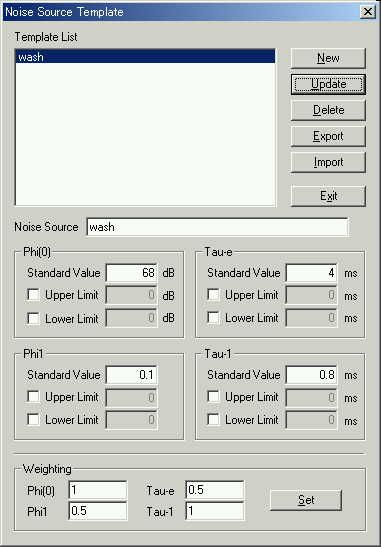
Sound level (Phi(0)) is set as 68 dB and t1 is set as 0.8 ms. Weightings for them are set as 1. Also, te is set as 4 ms and Phi1 is set as 0.1. Weightings for them are set as 0.5. Name this file as "wash" and click the New button to save a new template. Since the sound pressure level of Toilet Flushing Noise is almost the same each time, and there is also information on t1, f1, and Taue, Toilet Flushing Noise should be identified correctly.
The sound was reproduced by VAIO, and the automatic measurement was tested by
Dell Inspiron7500 with the above setup. It has identified satisfactory. Measured
sound pressure level (61.66dB) is close as a template (68dB). t1
was 0.79, and f1 was 0.82. te
was 17.07ms.
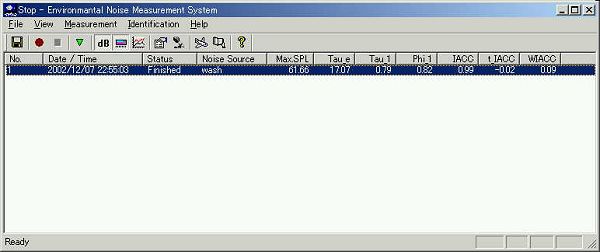
Test was repeated ten times. Sound level was between 60 and 66 dB. To raise
identification accuracy more, it is necessary to set the time of te
minimum as identification conditions. te
becomes the minimum at the moment a signal changes. So te
minimum is used to compare the state of the signal. Then, t1
should be 0.4 and f1 should be 0.16-0.3.
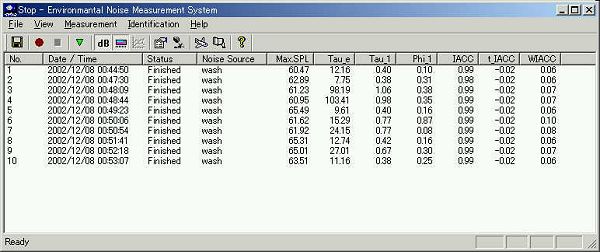
Measurement condition was changed. Running step was set as 0.01 sec.
Identification is set as Minimum te.
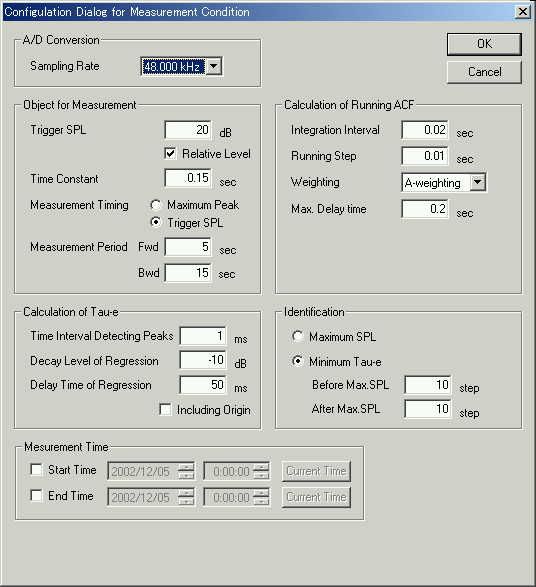
Same template is used.
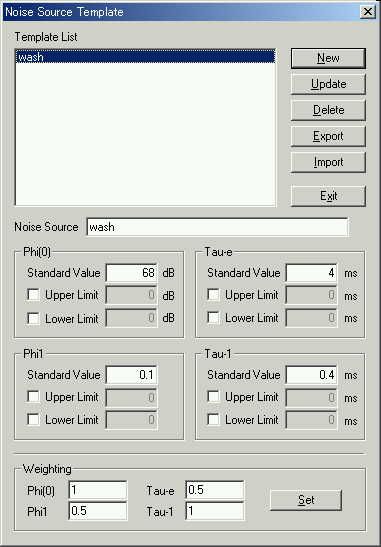
As the result of the automatic measurement, SPL were around 67 and 68 dB,
Tau-e were 6.56, 6.82, 6.54, 7.45, and 10.4, t1
were 0.35 for all times, f1 were 0.42,
0.14, 0.13, 0.15, 0.22, and 0.26. It was almost a same result as I
thought.
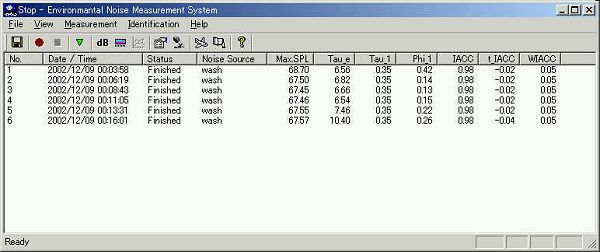
Template is changed.
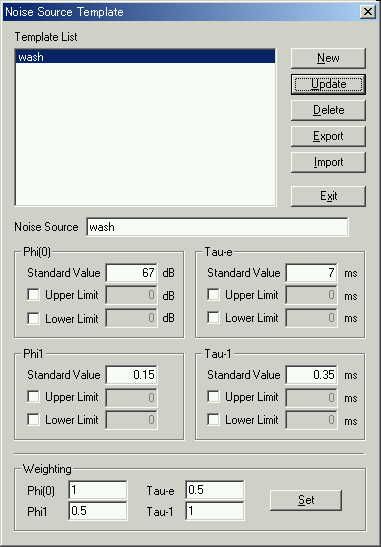
Sound file of the flushing noise
![]() wc2.wav (1,551KB)
wc2.wav (1,551KB)
Click the above file to play a sound. You can also download the file. Then, it can be loaded by RA and analyzed by SA as in this page.
December 2002 by Masatsugu Sakurai